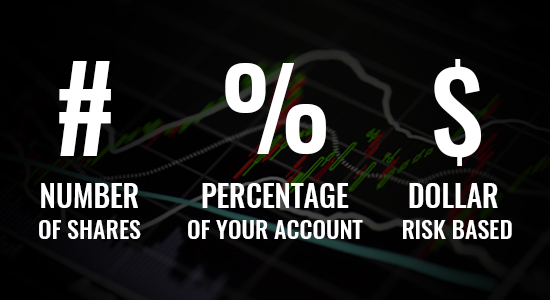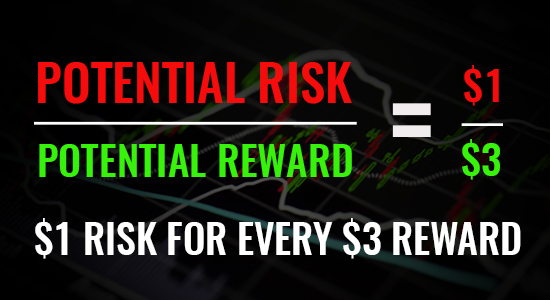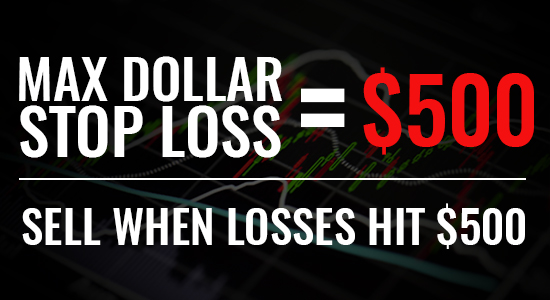Once you choose your trading style, you’ve essentially defined the types of setups you are looking to trade. The next step is developing a system for actually trading these stocks. This can make or break your success. Managing your money properly is just as important as identifying favorable trade setups.
Here are a few of the things you should be focused on:
Position sizing
Once you find what you believe to be a profitable setup, you need to decide how many shares you’d like to buy. While this may seem like an easy decision, it can actually be a large determinant in your success. If you use all of your capital for one trade, you expose yourself to unnecessary risk that could end your trading career. Focus on protecting your capital and choose position sizes intelligently. As a new trader, it’s better to start with small position sizes and work your way up to bigger ones.
There are a few ways in which you can choose your position sizes.
Percentage of your account – You may decide to invest no more than 10% of your account into any trade. This means that in the rare case that the stock goes completely against you, the most you can lose is 10% of your capital.
Number of shares – Some traders prefer to trade the same number of shares for each trade. For example, a trader may always enter a trade with 1000 shares of a given stock. When using this approach, you should ensure that you are not choosing an arbitrary number and exposing yourself to unnecessary risk.
Risk based position sizing – You can never predict risk with 100% certainty, but you can choose position sizes based on your expected risk. For example, if you buy a stock at $1.20 and have a stop loss set at $1.00, you could choose your position size based on how much money you’d like to risk. If you were looking to risk up to $200, you would buy 1,000 shares. If you were looking to risk up to $2000, you would buy 10,000 shares. Of course, you are not entering trades expecting to lose money, but ignoring the inherent risk would be foolish. This leads to the point of understanding risk/reward strategies.
Risk/Reward Ratio
The risk/reward ratio is fairly simple. It’s the ratio of how much money you are willing to risk compared to how much money you think you can make. For example, if you buy a stock at $11 and think it can go to $14, you may set up a stop loss at $10 to protect yourself in case the trade does not go in your favor. This would mean the trade has a risk/reward ratio of 1:3. You are risking $1/share for the chance to make $3/share. It’s important to keep in mind that the “risk” and “reward” levels are not chosen arbitrarily. There needs to be a reason why you think the stock can go to $14 and why you think you’d need to stop out at $10. Of course, that is another topic for another day.
There is no golden risk/reward ratio, however you will always want the potential reward to be higher than the potential risk. If your risk/reward ratio is 1:1, you have the same odds as you would if you placed your money on black at a roulette table, and trading should NOT be approached like gambling.
The risk/reward ratio is a great way to find favorable trading setups and choose position sizes accordingly. That being said, it’s important to have a max dollar stop loss so that you can protect yourself if things don’t go according to plan.
Max Dollar Stop Loss
The market is full of surprises, so one should not be naïve enough to believe that they’ve covered all of their bases. You may find a trade with a risk/reward ratio of 1:3, however things may not go as planned. Using the same example from above, you may buy a stock at $11/share and plan to sell at $10/share if the trade goes against you. In theory, you should be able to follow your plan and get out of the stock when you want, however you also need to account for unexpected circumstances. For example, the company may release a negative press release that causes shares to drop from $11 to $9 within a minute. At that point you need to have a backup plan. This is why a max dollar stop loss is crucial.
A max dollar stop loss is simply the highest amount of money you are ever willing to lose on a trade. If you reach your max dollar stop loss, you sell immediately. So, if your max dollar stop loss is $1000, you need to sell when your losses reach $1000. It can be easy to start rationalizing and assume the stock may move in your favor again, but that’s a slippery slope. Yes, theoretically, the stock could move back up and you could recoup your losses, however the stock could also go down further and that $1000 loss may become a $2,000 loss, then a $5,000 loss, etc. Without a max dollar stop loss, you may easily blow up your account with a single trade. The max dollar stop loss is a fail safe designed to keep you from blowing up your account in a single trade.
The Importance of Money Management Strategies
Money management strategies are designed to protect your hard-earned capital. We discussed how it’s important to have a clearly defined strategic trading plan. It’s just as important to have a clearly defined money management strategy. Even the best traders need to do this.
For example, if you have a 90% win rate but your losses are 10x larger than your gains, you aren’t going to be very profitable. You need to work on a money management strategy that aligns with your day trading strategy and allows you to stay profitable in the markets.
Next, we will discuss some of the other important trading tools.




